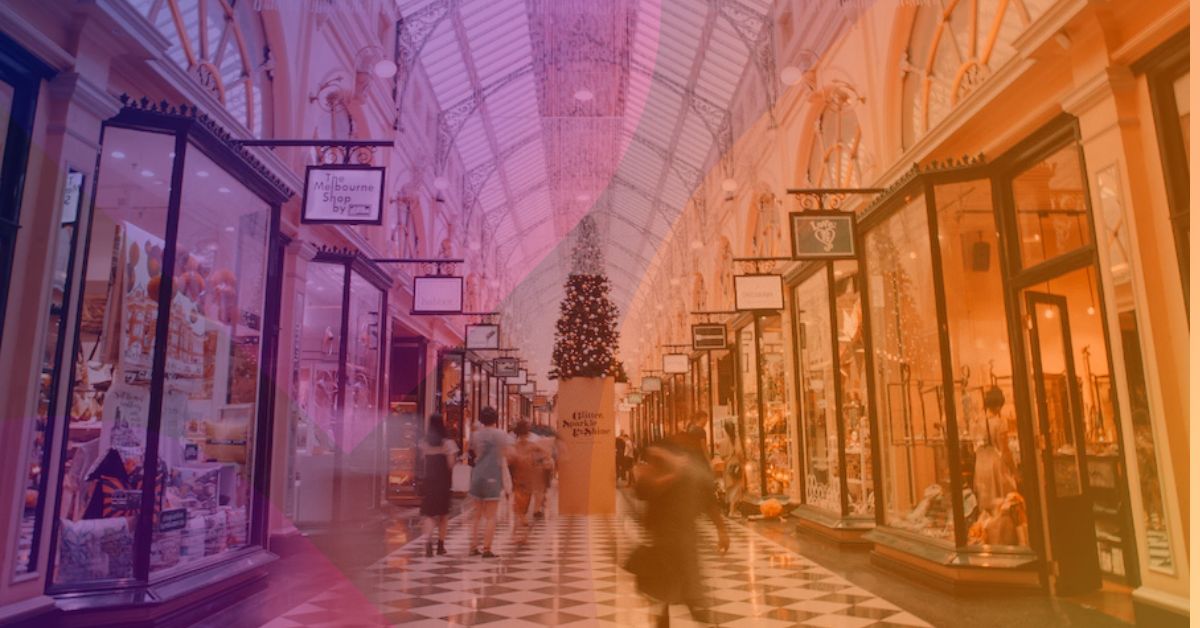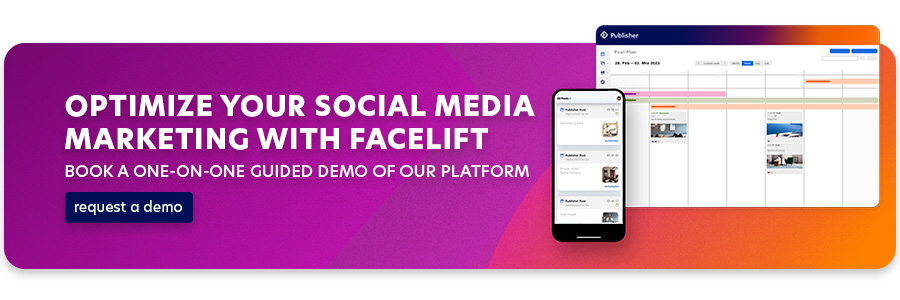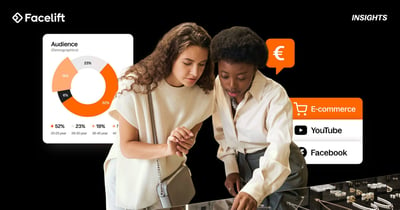As smartphone screens are seen more often than store windows, the way shoppers shop and discover products has radically changed. The next time you're in a store, take a look: how many people are holding their smartphones? Are they sending messages, checking stock prices, reading product reviews, or comparing prices online?
For many stores and retailers, it's worth studying this behavior and taking a closer look at how it can benefit their business and marketing strategy.
10 Reasons why social media marketing is essential for retail
Social media has become an indispensable tool, taking the inspiration and purchase phases of retail to new heights. The importance of social media in retail goes far beyond photo sharing and status updates. Here are ten compelling data points that underscore the urgency of taking action on social media.
- Despite the growth of online shopping, only 15.7% of total retail sales were attributed to e-commerce in 2022. After the post-pandemic years of 2020 and 2021, this number saw a slight decline.
- 82% of smartphone users research purchases they intend to make in physical stores online.
- 78% of internet users research brands and products on social media.
- YouGov's Social Shopping Analysis shows that by 2022, 24% of consumers had made a purchase using social media. Younger respondents (aged 25-34) are more likely to shop via social media (41%), while only 15% of those aged 55+ say they have done so. An additional 24% are open to being social shoppers in the future.
- The influence of influencers varies by age. Notably, 52% of Gen Z and 39% of Gen Y say they have made a purchase based on an influencer's recommendation. This influence drops to 8-12% among online consumers over the age of 40.
- The most common product categories researched online before purchasing offline are home appliances (59%); health, fitness, beauty (58%); toys and games (53%); electronics (41%); and baby products (36%).
- Customers who come to an e-commerce site through social media have a 159% higher conversion rate than those who don't.
- 26% of shoppers read online reviews before every purchase, with 48% doing so often and 22% doing so occasionally. Only 4% of Germans rarely or never read online reviews before making a purchase.
- 76% of local searches result in a store visit within 24 hours, and 28% of these visitors make a purchase.
- German retailers are lagging behind in social media usage, with Instagram Reels being the least utilized at just 10%. Over 60% use image posts, and over 80% use Facebook for interactions.

Which social networks for retailers?
1) Google Business in the retail industry:
Google Business is an important (if not the most important) tool for local businesses. This service allows you to manage information about your business, such as hours, location, and contact info. Best of all, customers can access your business details directly in search results and on Google Maps. This is especially important for retail businesses, as it allows you to inform customers about current offers and changes easily. Customers can also leave reviews and upload photos of your business, increasing your credibility and visibility. The importance of these aspects is clearly demonstrated by the data and statistics mentioned above.
2) Facebook:
Facebook offers a wide range of social commerce tools. Among the most prominent are Facebook Shops and Marketplace. With Facebook Shops, retailers can create customized shopping experiences, showcase products, and sell directly from their Facebook and Instagram profiles. Marketplace allows you to list products for sale within the Facebook community. As one of the largest social media platforms, Facebook offers access to a huge audience and effective targeting options for advertising, making it essential for the retail industry. Facebook groups are also an excellent way for retailers to engage locally.
3) Instagram:
Instagram is known for its visual appeal, making it an ideal platform for the retail industry. Features like Instagram Shopping and shoppable posts allow brands to tag and link products directly in their posts. The shopping icon allows customers to navigate directly to the product and make a purchase. The platform encourages product discovery and interaction through visual content, which has immense value for retailers.
4) Pinterest:
Pinterest is a platform built around discovering and sharing visual inspiration. Retailers can showcase their products in the form of "pins" that serve as a source of inspiration for customers. With Pinterest Shopping, customers can buy products directly from Pins for a seamless experience. Known for its shopping and inspiration features, Pinterest enables retailers to attract new customers and increase sales.
5) TikTok:
TikTok has become an up-and-coming platform that appeals to a younger audience. Retailers can create short, creative videos to showcase their products and capture the attention of the TikTok community. The "link in bio" feature allows customers to navigate to the website to purchase products. TikTok's uniqueness lies in its ability to leverage viral trends and challenges to attract attention.
#TikTokMadeMeBuyIt: This hashtag describes a trend in which an increasing number of users share their enthusiasm for products purchased on the platform and demonstrate how they are used in their daily lives. This often leads to increased demand and sales for these products, as TikTok users are encouraged to make purchases through these authentic recommendations.
6) Snapchat:
Snapchat is a platform for ephemeral, visual content. Retailers can use Snap Ads and shoppable AR lenses to engage customers. Snap Ads are short, vertical video ads that drive customers to product pages, while Shoppable AR Lenses allow customers to "test drive" products in real-life scenarios. With its youthful audience and creative advertising opportunities, Snapchat is an excellent platform for retailers to reach younger consumers.
Why is social media marketing important for retailers?
We thought the numbers above would speak for themselves, but here are the top 4 arguments for social media marketing in retail:
- Reach and visibility: Social media allows you to connect with customers you might not otherwise reach. The reach is enormous, and it's easy to attract new customers.
- Interaction and customer intimacy: Social media allows you to connect directly with your customers, answer questions, and gather feedback. This builds trust and loyalty.
- Targeted advertising: Platforms like Facebook and Instagram offer powerful advertising options that allow you to target your audience. This saves money and increases the effectiveness of your advertising campaigns.
- Trends and insights: Social media allows you to monitor trends and market developments in real-time. This helps you adjust your product offerings and marketing strategies.
The bottom line: retail and social media
Today, the marriage of retail and social media is unstoppable. Social media offers a multitude of ways to reach customers, provide inspiration, and enhance the shopping experience. The variety of platforms allows retailers to reach a broad audience and showcase products in creative ways. From Facebook to Instagram to TikTok, each platform offers unique opportunities to connect with customers and drive sales.
Want to learn how to manage your social media presence more effectively? Discover our tool, Facelift, which can help you optimize your social media strategies. Request a free demo and find out how Facelift can take your social media marketing to the next level.







